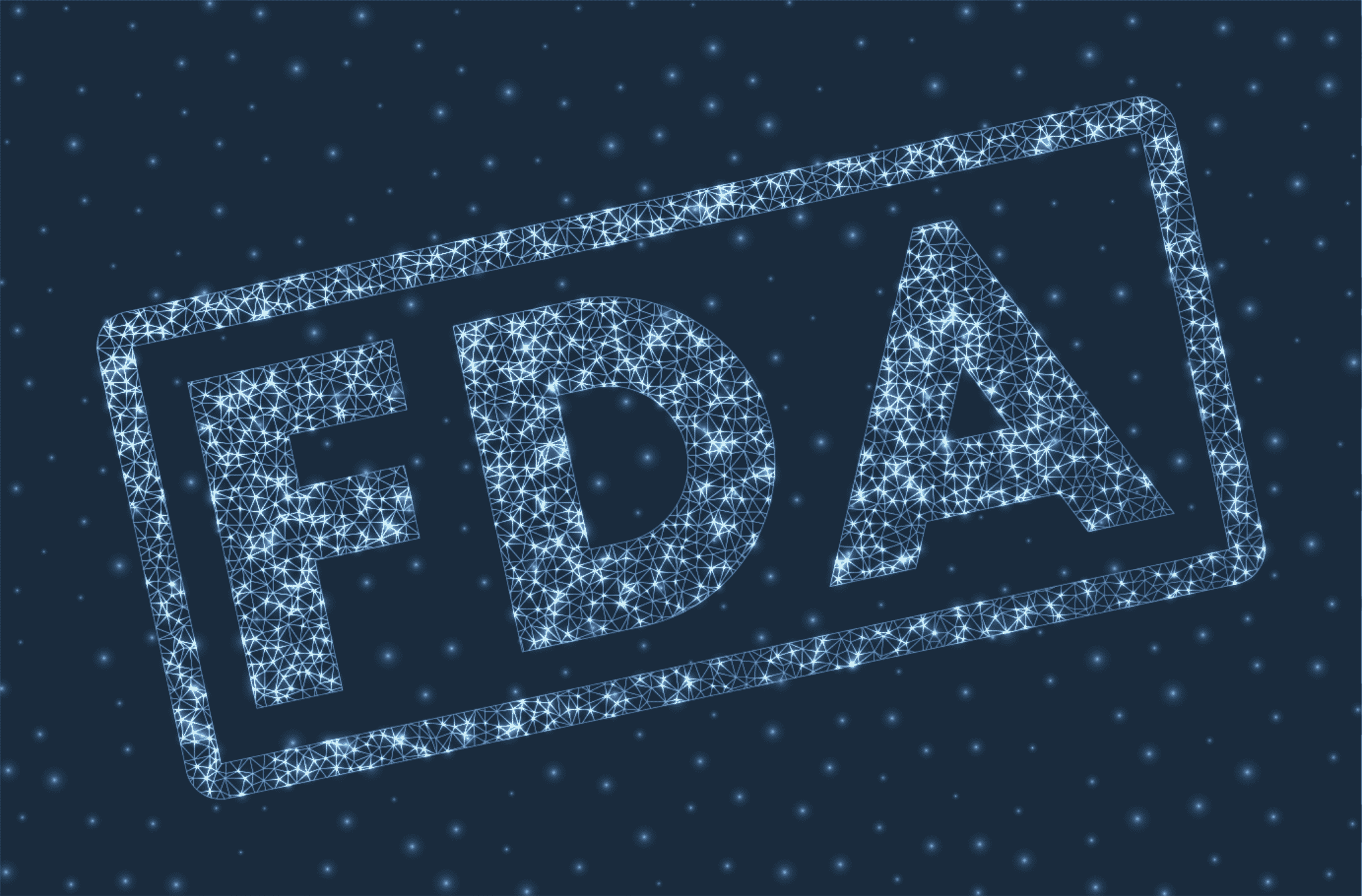Back on the Case: FDA Issues Fresh Enforcement Letters
July 11, 2022
After two years of decreased enforcement activity (with an out-sized portion of activity being COVID-19-related), the Food and Drug Administration (FDA) Office of Prescription Drug Promotion (OPDP) has issued several Untitled Letters in 2022 to address prescription drug promotion violations. An Untitled Letter is an enforcement tool used by OPDP to provide initial notification to manufacturers that FDA is aware of violations of federal law which, although not rising to the level of regulatory significance requiring a Warning Letter, must be brought into compliance. Three such OPDP Untitled Letters have landed in drug manufacturers' inboxes in the first half of 2022. Evaluating the themes of these letters may help other manufacturers keep their inboxes free of such "unwelcome" correspondence. This topic was discussed at a recent program held by Gardner Law in Stillwater, Minn., which featured ten attorneys (seven from our team and three in-house general counsels) and one former FDA compliance officer. The program also covered a range of FDA, anti-fraud and privacy topics. Click below to view a recording of the program.
Trulicity® Untitled Letter
Key Topics: Lack of important safety information; Misleading use of indications; Repeat offender status
On January 19, 2022, Eli Lilly received an Untitled Letter from OPDP regarding its promotion of Trulicity (dulaglutide) injection in a social media post, which included both print and video communications, alleging that the post misbranded Trulicity under 21 U.S.C. 352(a). The Untitled Letter raised concerns that the social media post was false and misleading, and it referenced the fact that FDA had sent prior communications to Eli Lilly raising similar concerns.
Trulicity is indicated, in part, as an adjunct to diet and exercise to improve glycemic control in adults with type 2 diabetes mellitus. Trulicity carries a number of risks including a boxed warning for thyroid C-cell tumors and is contraindicated for patients with a history of medullary thyroid carcinoma. The video within the social post contains language on Trulicity's ability to lower one's "A1C along with diet and exercise." However, the video does not disclose the full intended population, as it is not indicated broadly for patients with diabetes mellitus, but those with type 2 diabetes mellitus. According to OPDP, a consumer with type 1 diabetes mellitus may be misled with this communication.
OPDP also compared the manner in which the benefit material was presented against the way the risk information was presented. The letter notes that the benefit information was presented in "colorful, compelling, and attention-grabbing fast-paced visuals that take up the majority of the post." However, the risk information was provided in a "small window relegated to the bottom of the post and is presented using fast-paced, scrolling, small font." OPDP noted that it was difficult for a consumer audience to read the risk information. The issues were magnified from a public health perspective "because the promotional communication creates a misleading impression regarding the safety and effectiveness of Trulicity … [which includes] a boxed warning for the risk of thyroid C-cell tumors." As a result, OPDP concluded that the risk information was not presented in a balanced manner.
Duobrii® Untitled Letter
Key Topics: Fair balance of benefit and risk; Infomercials; Superiority claims
On March 31, 2022, Bausch Health received an Untitled Letter from OPDP regarding its promotion of Duobrii (halobetasol propionate and tazarotene) lotion, a topical indicated treatment for treatment of plaque psoriasis, concluding that the drug had been misbranded based on false and misleading claims that failed to adequately disclose risk and failed to create a balanced impression of overall benefit.
The Duobrii promotional content in question was delivered in the form of a four-and-a-half minute segment on Lifetime Television's "The Balancing Act," following the psoriasis treatment journey of a young mother named Katie. In the segment, Katie described the life-changing results of the drug, including the depiction of Katie wearing clothing exposing the skin of her arms and shoulders that she "previously would not have worn" due to plaque psoriasis flare-ups. Problematic to OPDP, however, was the failure of the segment to reference attendant risks associated with the use of Duobrii-including photosensitivity, risk of sunburn, and the need for use of effective sunscreen and protective clothing-simultaneous to discussion of these benefits.
In addition to this messaging, OPDP noted Bausch's failure to adequately warn as to the risk of birth defects if used during pregnancy. Noting that the woman in the segment appeared with two young children and appeared to be of child-bearing age, OPDP cited Bausch's failure to reference the precaution section of the Duobrii Prescribing Information advising females to receive a negative pregnancy test prior to initial use and to utilize effective contraception during treatment. More broadly, regarding Bausch's alleged minimization of risks, OPDP noted the use of large print for benefit information in contrast to small print, interrupted by audio narration, describing risks. OPDP additionally cites Bausch's use of clinical superiority claims unsubstantiated by adequate, head-to-head clinical evidence as a further example of false or misleading promotion.
Roszet® Untitled Letter
Key Topics: Clinical trial results; Statistical analysis methods; Fair balance of benefit and risk
On June 2, 2022, Althera received an Untitled Letter from OPDP regarding its promotion of Roszet (rosuvastin and ezetimibe) tablets, indicated as adjunctive to diet in patients with non-familial hyperlipidemia to reduce LDL cholesterol (LDL-C), as well as alone or as an adjunct to other LDL-C-lowering therapies in patients with homozygous familial hypercholesterolemia to reduce LDL-C. The letter concluded that the drug had been misbranded based on allegations that Althera had misrepresented statistical analyses in making outcomes claims, as well as that it had minimized risk information, in manners that were false or misleading.
The promotional piece in question was a physician-directed brochure with a series of claims regarding percent-reductions in LDL-C by dosage amount ("Roszet 10 mg/10 mg: 64%; Roszet 20 mg/10 mg: 66%; Roszet 40 mg/10 mg: 72%") and from two of Roszet's clinical trials (depicting reductions in LDL-C from its GRAVITY Study and its EXPLORER Study). Problematic to OPDP was the statistical analysis used to arrive at these claims. In the LDL-C-reduction section, these numbers appear not to be the findings of a particular study, but rather an Althera calculation combining results from two separate studies with disparate therapies studied (one a monotherapy study; one a combination study including an ongoing statin), patient populations, durations, and endpoints. FDA found no scientific basis for combining study results in this manner. In depicting reductions from its two clinical studies, OPDP highlighted that the brochure misstated the conclusions by failing to provide key study-design information, including that the GRAVITY study involved 6 weeks of monotherapy followed by six weeks of combination therapy (noting that the brochure prominently states "Patients Can Get Below 70 mg/dl with One Pill Daily") and that achieving 70 mg/dl was only one of many secondary endpoints that did not control for multiplicity testing of secondary endpoints. These outcomes claims, therefore, created a false or misleading impression of efficacy of Roszet.
Additionally, OPDP found the brochure lacking in risk information in a way that minimized the risks in comparison to the benefits. The brochure failed to present Roszet's contraindications, warnings, and precautions with prominence and readability reasonably comparable with the presentations of benefits, as demonstrated by the "typography, layout, contrast, headlines, paragraphing, white space, and other techniques apt to achieve emphasis." By minimizing the risks associated with the drug, FDA concluded that the brochure was false or misleading.
How Can We Avoid Our Own Letters?

FDA enforcement letters are made public, and they therefore not only serve their stated purpose of putting offending manufacturers on-notice of their violations, but they also serve as cautionary guidance to industry. While OPDP's three 2022 Untitled Letters involve different types of communications, there are common themes which can be relied upon by manufacturers to tailor promotional practices:
- It's not just what you say; it's how you say it. Uniformly, these letters each address manufacturer methods of delivering information, particularly risk information, in determining whether the messages were false or misleading. Mere presence of risk information is not adequate. The prominence of risk information in comparison to benefit information is key to establishing fair balance in promotional communication.
- The format of your promotion does not matter. Regardless of the format of your advertisement - whether it is a traditional physician leave-behind brochure, or an infomercial co-hosted by Montel Williams, FDA will enforce promotional requirements uniformly. Note, however, that two of the three letters regarded direct-to-consumer advertisements, which FDA scrutinizes due to the audience's proneness to being misled by unchecked promotional practices. And remember that, while social media creates unique challenges in presenting risk, it is no defense to suggest that character limitations prevented a manufacturer from adequately presenting relevant risk information. If all the required information cannot fit, then it is best to alter the message or not post at all.
- Take heed when FDA addresses issues to your firm. The letters noted instances where FDA had previously contacted the manufacturers regarding their promotional activities. Informal communication should be taken seriously, as FDA clearly takes previous manufacturer notifications (and actions in response to those notifications) into account when contemplating enforcement activity.
- Context is king. OPDP acknowledges in its Untitled Letters (esp. Duobrii) that risk information can be provided, and can be done so in an adequately prominent manner, and yet it may not be provided frequently enough or sufficiently contemporaneous to coinciding benefits in order to create fair balance. Ensure that the risks associated with the benefit claimed are provided concurrently.
Using recent FDA enforcement letters as forewarning, manufacturers can avoid similar actions by ensuring they don't repeat the sins of their competitors. Dissemination of the lessons gleaned from letters like these should broad within industry. Knowledge of enforcement actions should not be the exclusive province of Legal and Regulatory teams, but should be shared with Marketing, Clinical- and Medical- Affairs, and other functions involved in creating and reviewing promotional communications. Additionally, firms should take FDA's guidance on the presentation of risk seriously. The failure to present risk-or the minimization of it when presented-is clearly top-of-mind to OPDP in evaluating the appropriateness of promotional materials.
Have questions? Contact us.
Information provided on this website is not legal advice. Communications sent to or from this site do not establish an attorney-client relationship. © 2022 Gardner Law. All Rights Reserved.